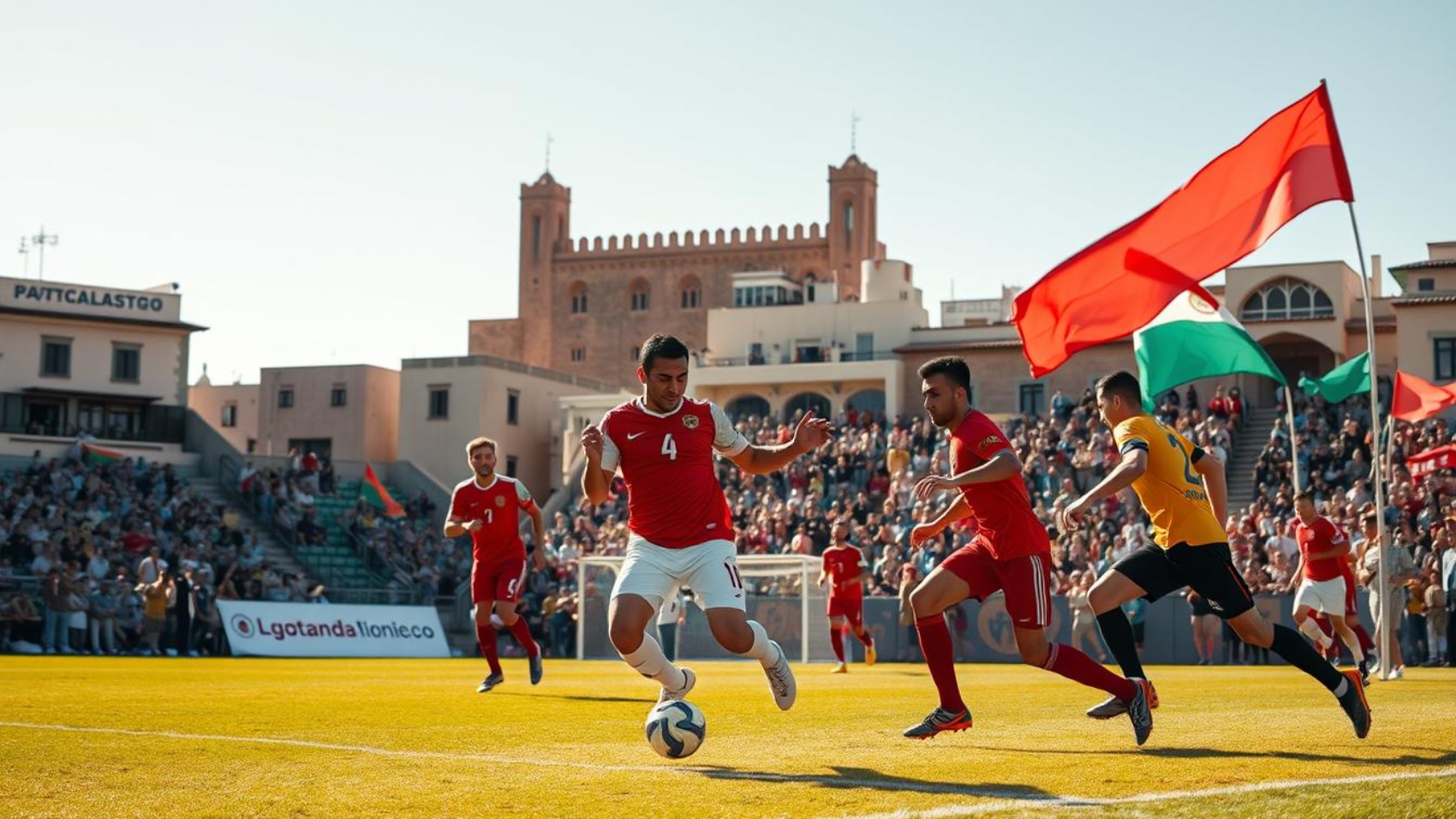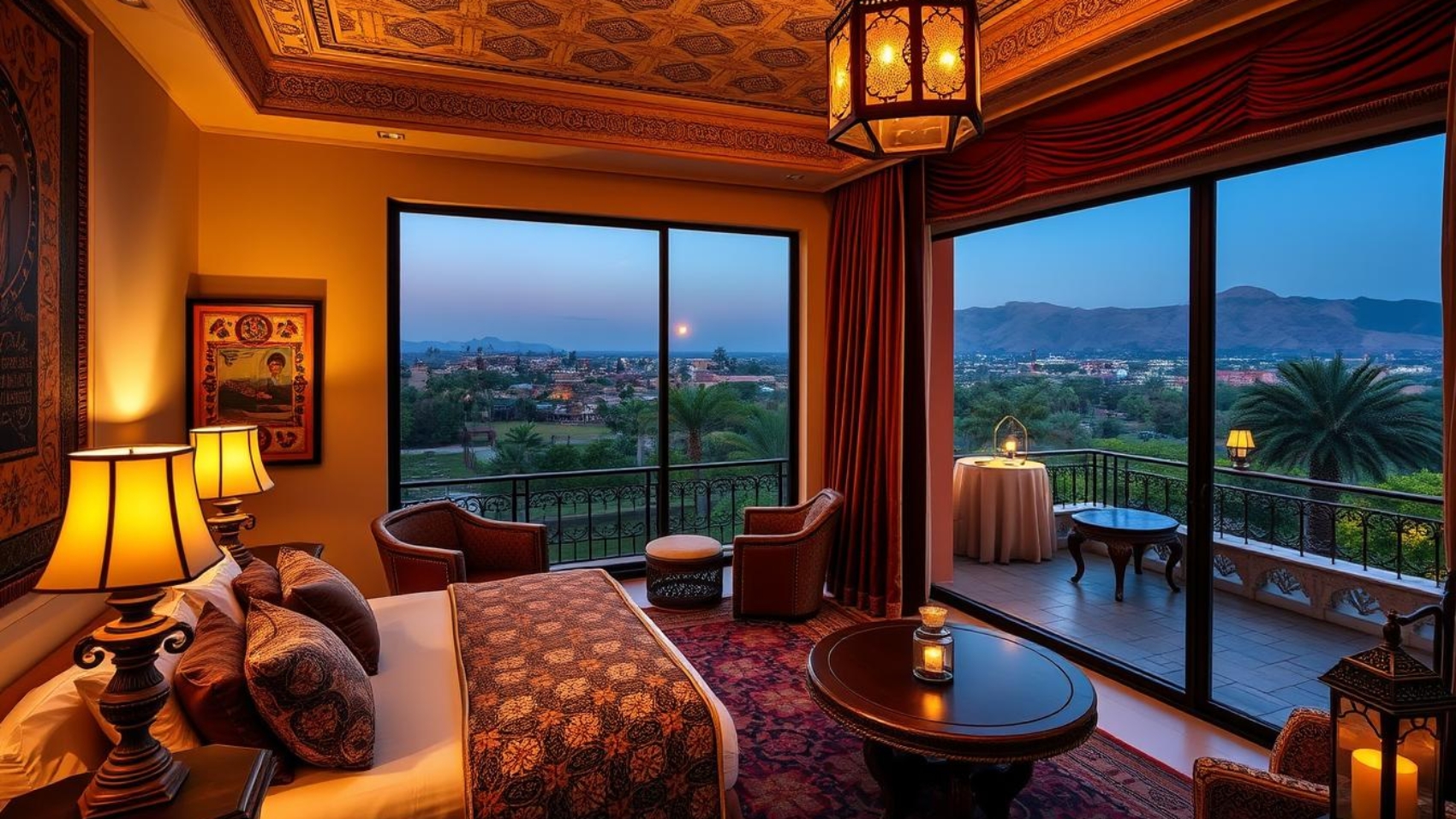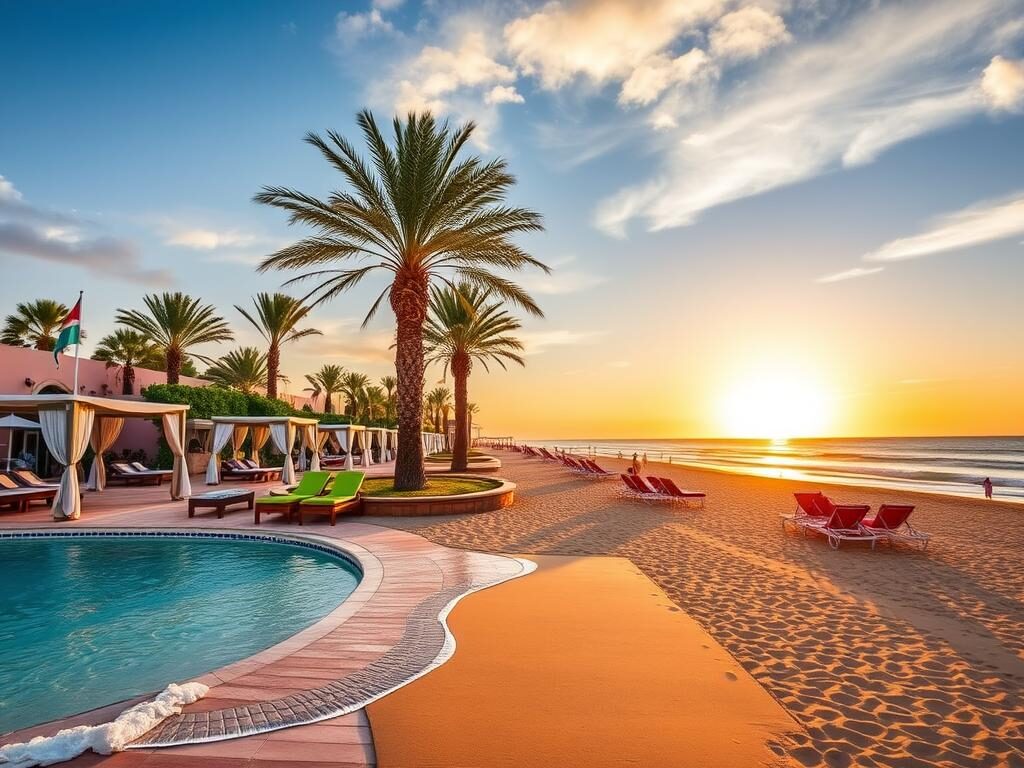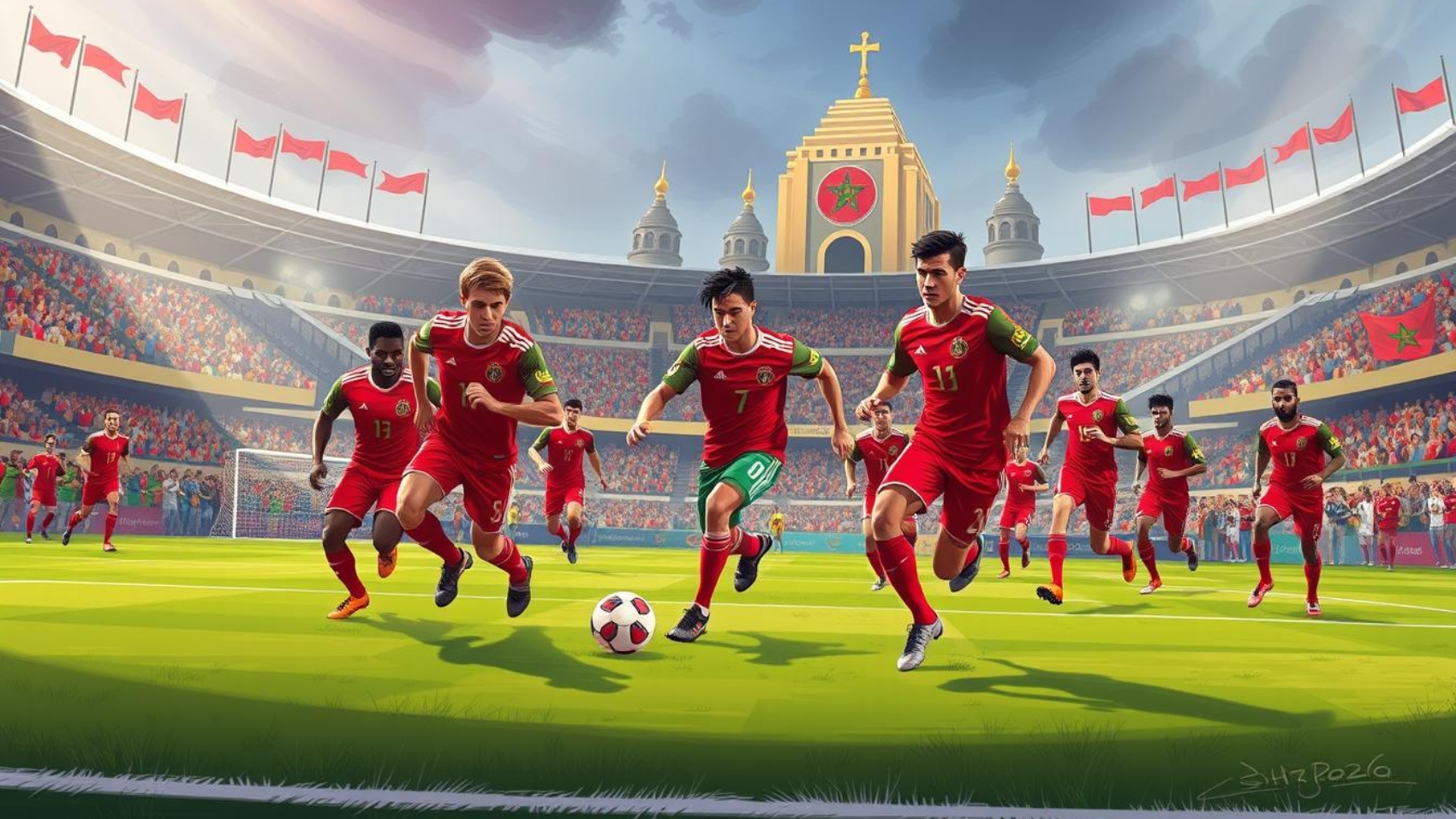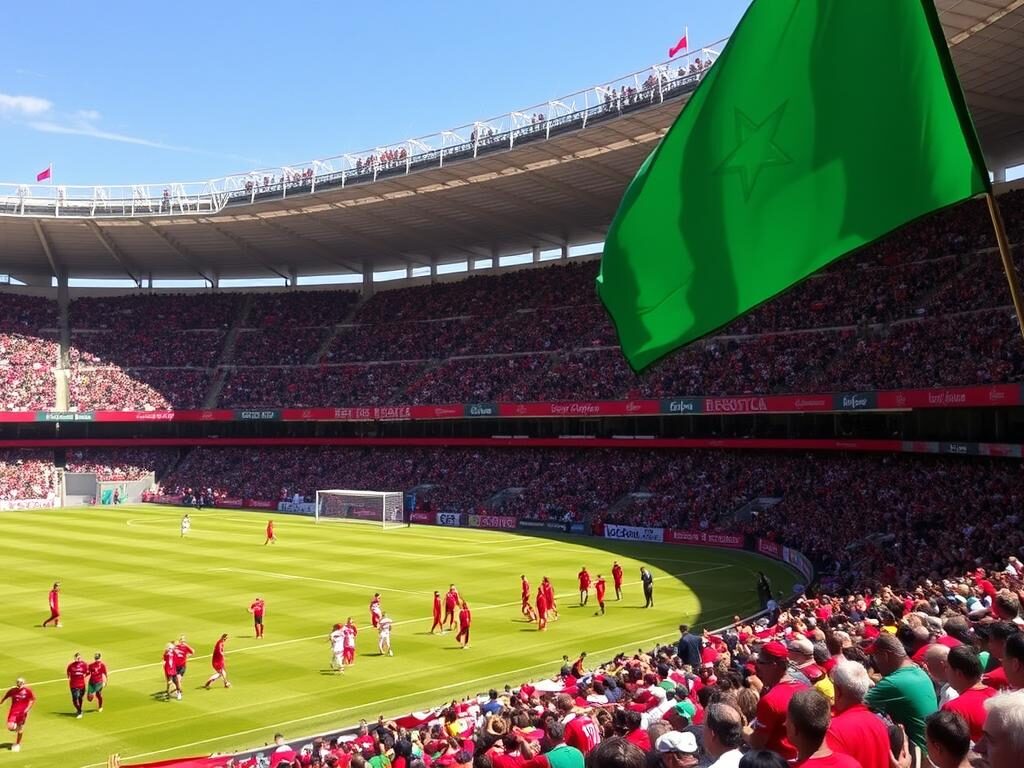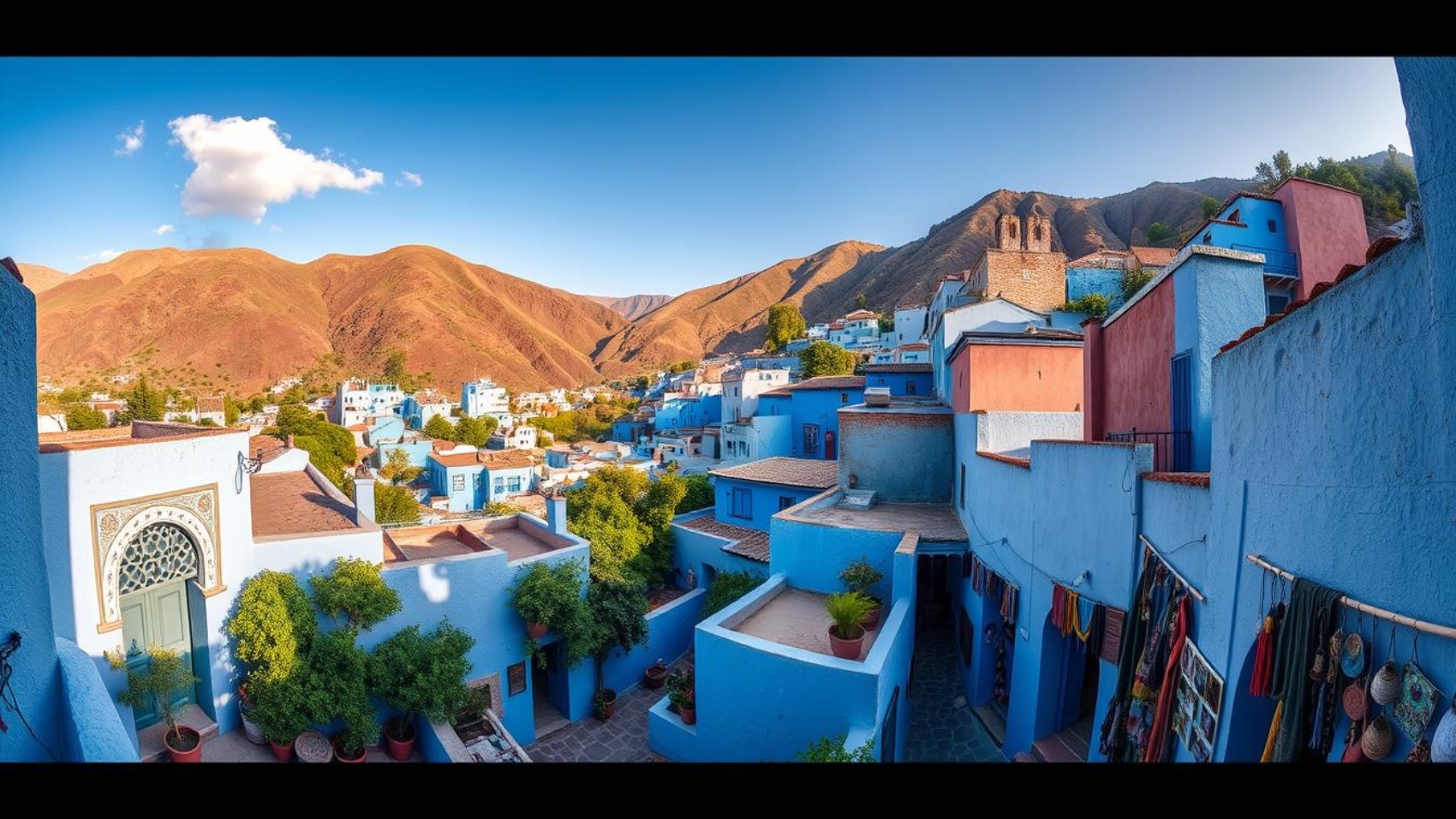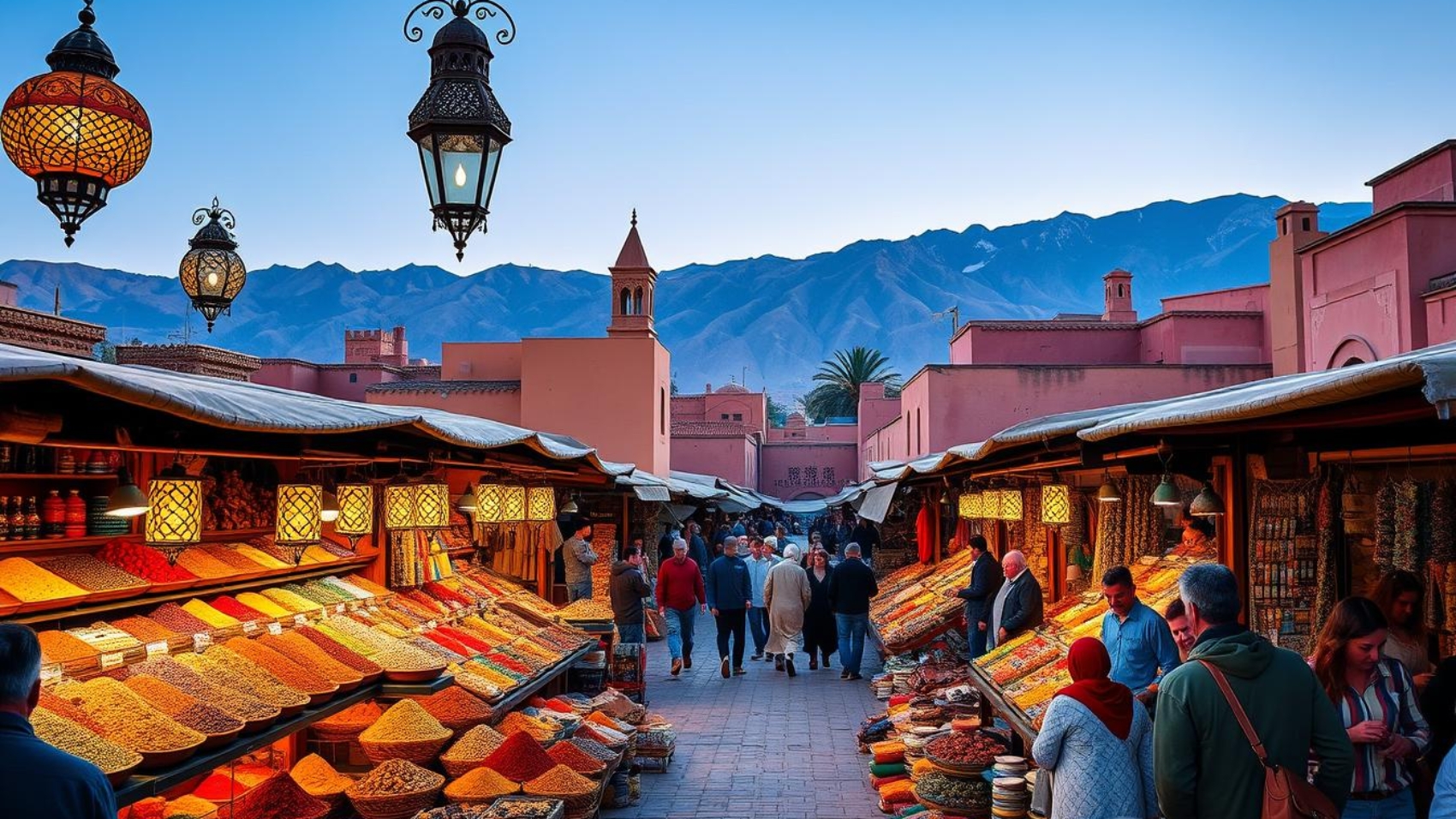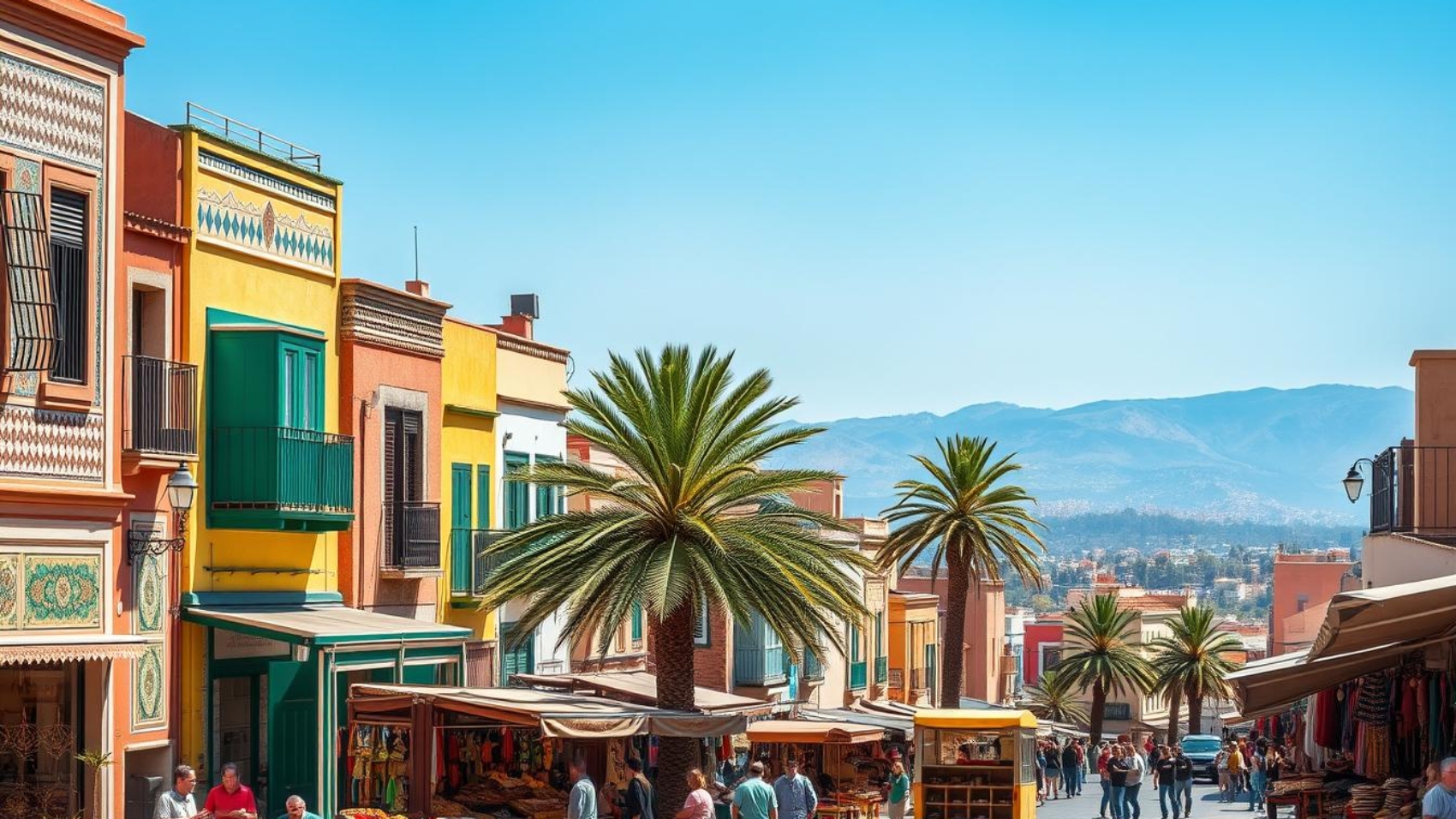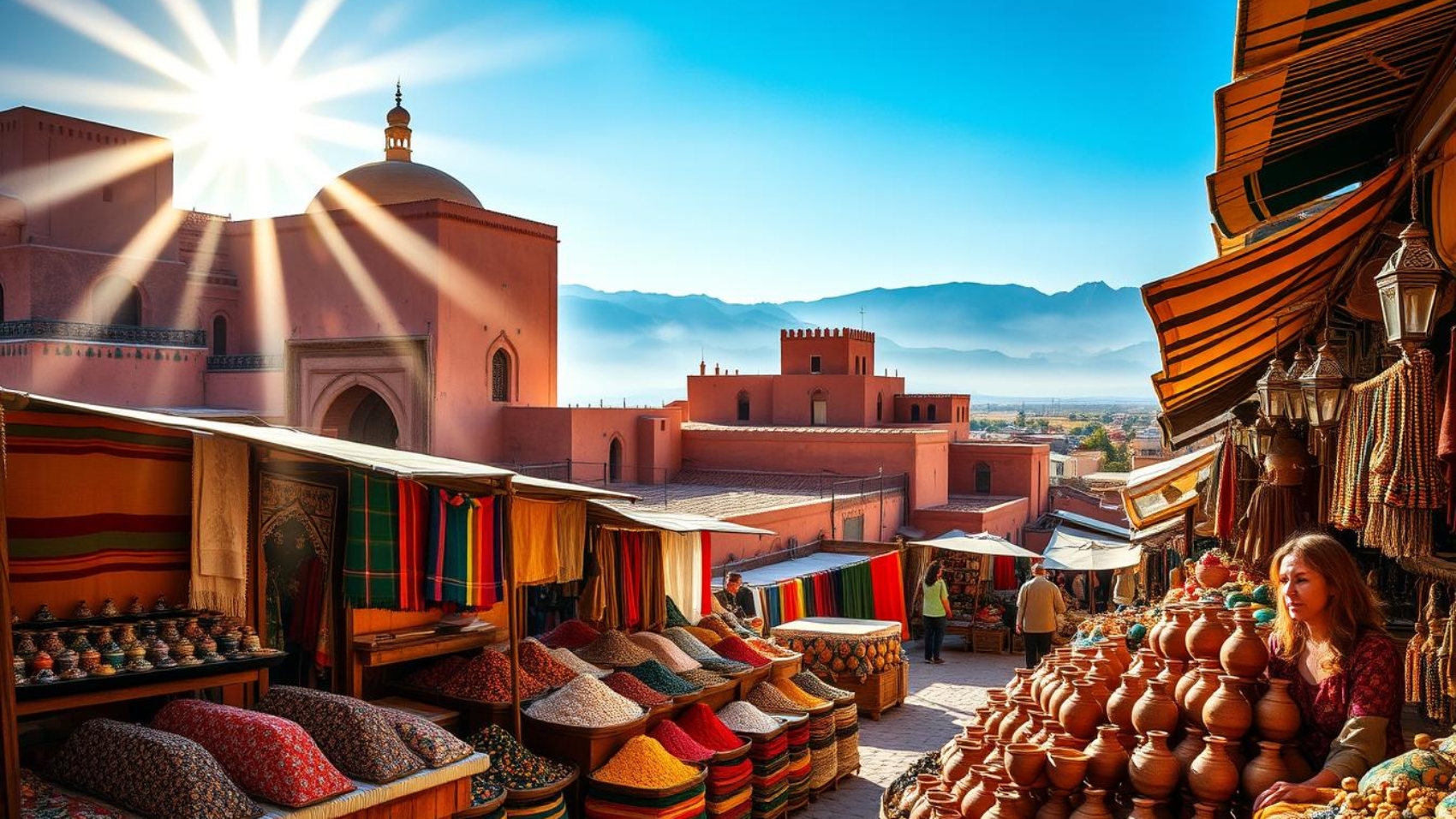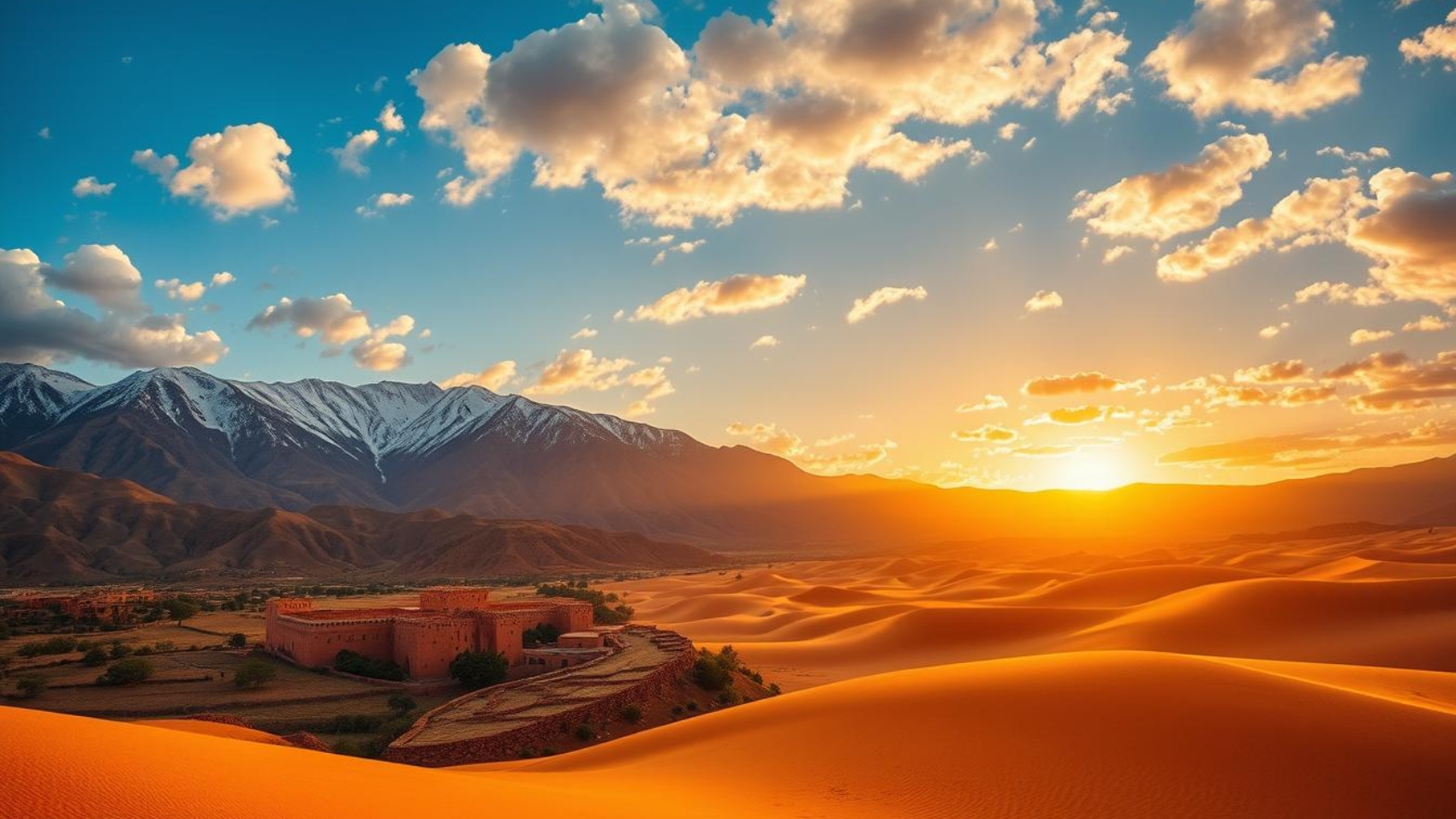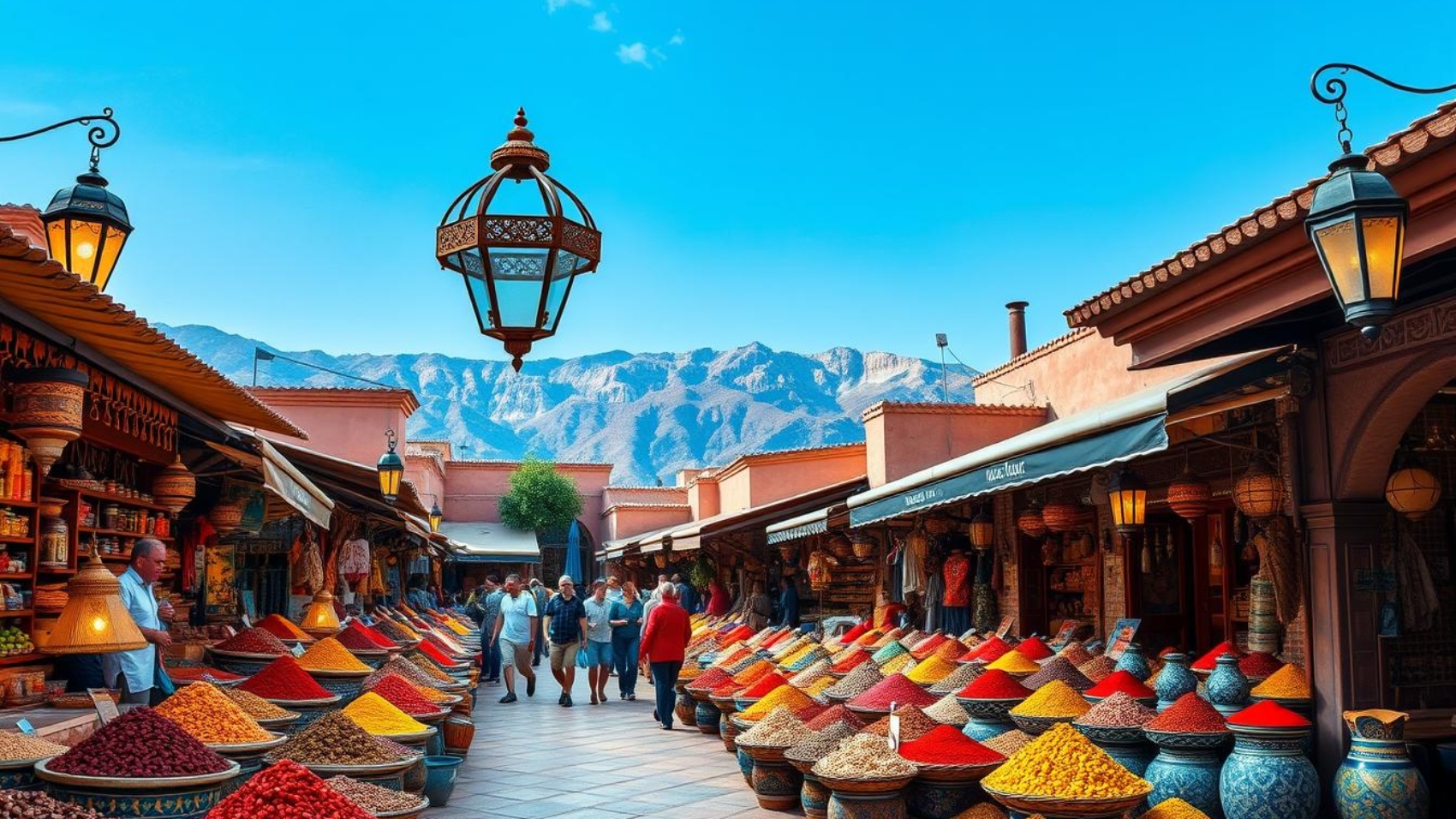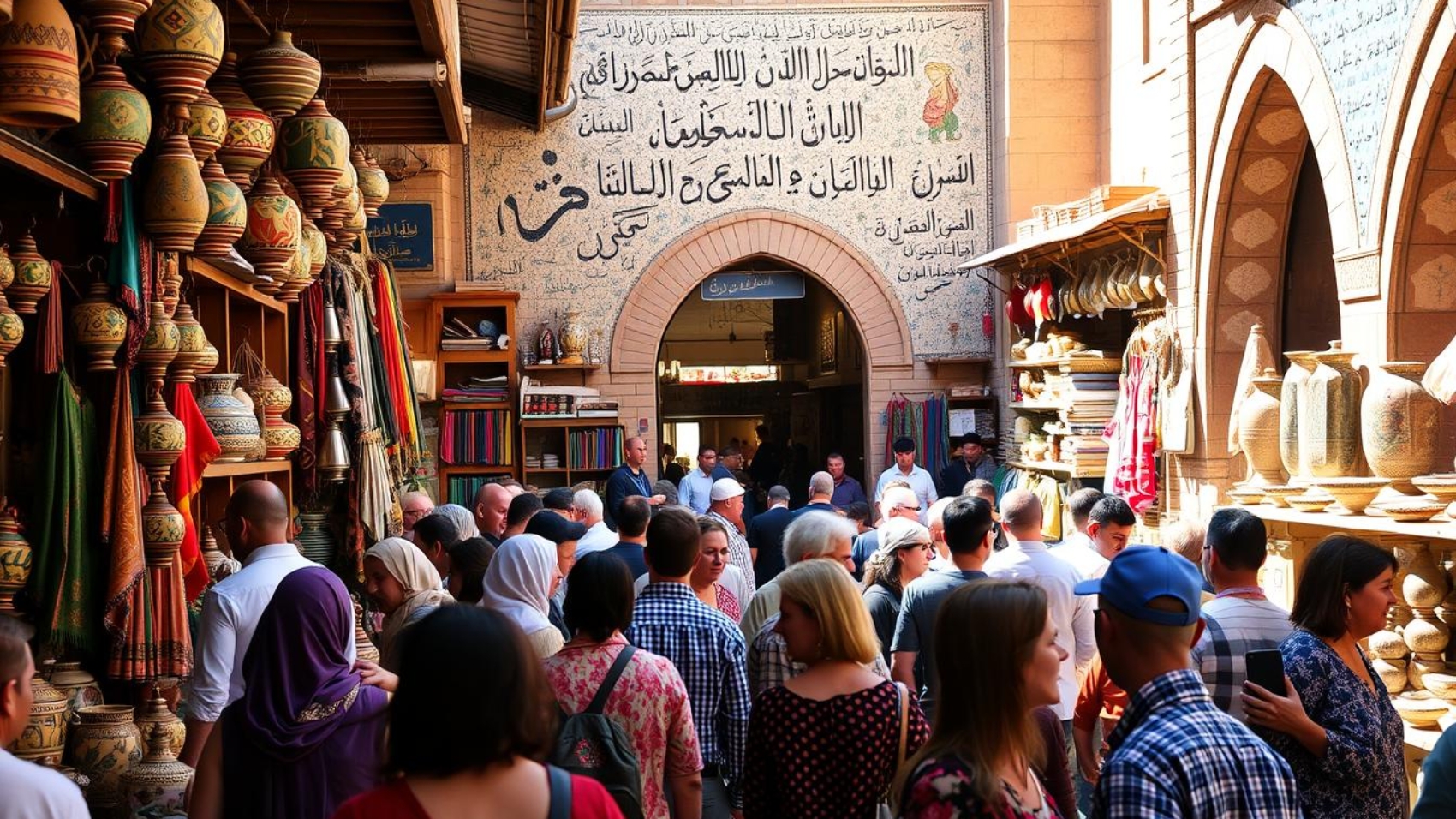Welcome to the vibrant world of morocco football. Here, football is more than just a game. It’s a big part of the nation’s identity. The matches are lively, rivalries fierce, and fans super enthusiastic.
For many, football in Morocco is a thrilling adventure. It shows off the nation’s cultural heritage and spirit. It’s not just a game; it’s a journey of passion and unity.
The Essence of Football in Morocco
Football in Morocco is more than a sport; it’s a key part of the country’s culture. It connects people from all walks of life, creating unity and community. Families and friends come together, making memories and strengthening their bonds.
Football is celebrated in local festivals and gatherings. Fans gather to support their teams, turning matches into big social events. This shows national pride and celebrates Moroccan sports heritage.
Football’s influence goes beyond the field, into music, TV, and social media. It inspires artists and creators, showing its role in shaping modern identities. Football in Morocco is a big part of its popular culture.
A Brief History of Moroccan Soccer
The history of Moroccan soccer goes back over a century. It shows the deep love and tradition of the sport. Football arrived in Morocco during the French colonial era, brought by European settlers. Soon, locals fell in love with it, starting clubs and leagues.
Important moments have shaped the soccer evolution in Morocco. The Moroccan Football Federation was formed in 1956. This was a big step, bringing structure and competitive games to the sport. It helped build a strong football culture in the country.
In 1970, Morocco made history by becoming the first African team in the FIFA World Cup. This achievement was a big moment. It inspired many and showed how important football was becoming in Morocco.
Today, soccer in Morocco has grown a lot. It has moved from small clubs to professional leagues. These leagues attract both local and international players. Soccer in Morocco is not just about winning. It brings people together and celebrates national pride.
The Moroccan National Team: A Journey Through Time
The Moroccan national team, known as the Atlas Lions, has won the hearts of many. They have a rich history and a strong record in international competitions. Their journey is filled with triumphs and challenges.
The Atlas Lions made history in the 1986 FIFA World Cup. They were the first African team to reach the knockout stage. This achievement sparked national pride and a love for football in Morocco.
Over the years, the team has competed in many African Cup of Nations. They won their first title in 1976. This success has inspired many young players in Morocco.
Many players have made a lasting impact for the Atlas Lions. Ahmed Faras and Hakim Ziyech are among them. They are remembered for their skill and determination.
The team’s matches are filled with memorable moments. Each game shows the team’s growth and dedication. The Atlas Lions’ journey is a key part of Morocco’s football culture.
Morocco Football: A Cultural Phenomenon
Football is a big part of Moroccan culture, shaping social life and personal connections. Fans’ deep passion for the game shows how it brings people together. It creates a sense of unity among different groups.
Community and Fan Engagement
Fans in Morocco show their love for football with energy and pride. Games are filled with cheers, flags, and a feeling of togetherness. This makes football more than a game; it’s a celebration of shared identity.
Football’s Role in Moroccan Society
Football teaches important values like teamwork, hard work, and discipline. These values are key in the sport and in Moroccan culture. When the nation supports its teams, it strengthens bonds and shows football’s power to unite.
Exploring the Moroccan Football League
The Moroccan football league is a showcase of the country’s deep football culture. It has several tiers, with the Botola being the top. This setup allows for teams to move up or down, adding excitement to the games.
Every season, clubs aim for the championship and to stay in their league position. This makes the competition intense and thrilling.
Structure and Format of the League
The league’s structure promotes fierce competition. Clubs play each other in a round-robin format, earning points for their standings. The season’s end sees top teams heading to continental competitions, while others face relegation.
This system keeps the games exciting and fans engaged. It’s a format that encourages clubs to give their best.
Key Teams and Rivalries
Wydad Casablanca and Raja Casablanca are among the league’s top clubs. Their rivalry creates electrifying matches that draw fans nationwide. These matches are a true display of the league’s spirit and fan passion.
Their games are filled with energy, making them a season highlight. They are a testament to the league’s competitive nature.
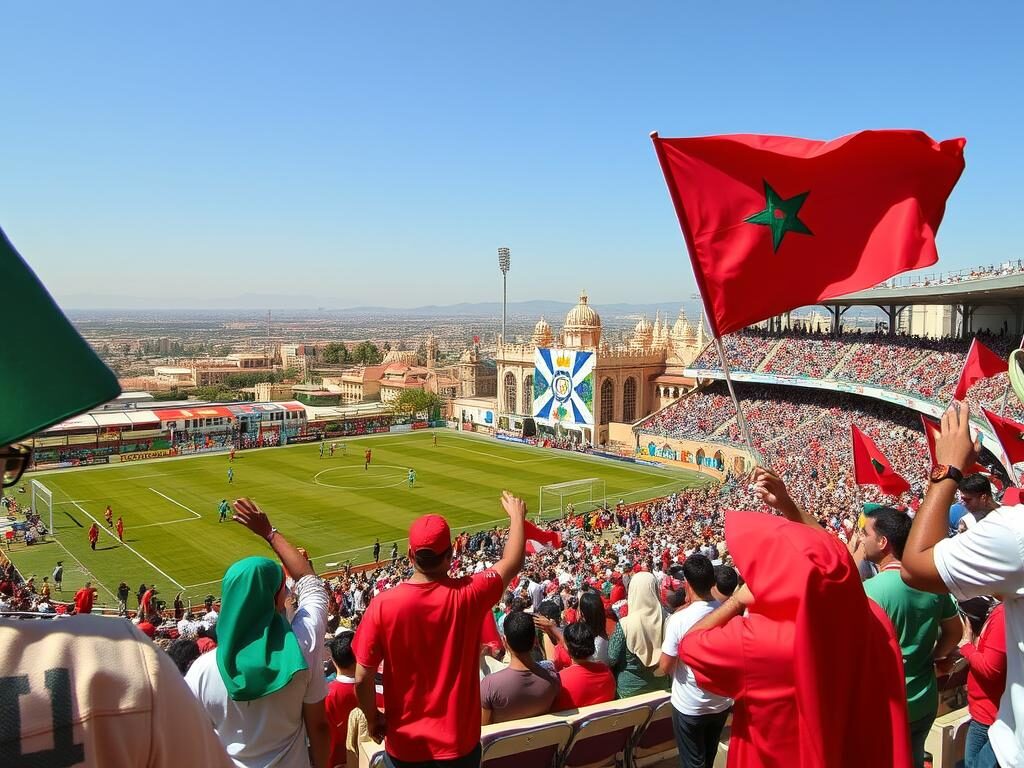
Notable Moroccan Football Players
Morocco has a rich history of talented football athletes. Hakim Ziyech is known for his amazing passing skills. He has helped his clubs win big in leagues and tournaments.
Achraf Hakimi is another standout. His speed and versatility as a defender are unmatched. His performances have shown Moroccan football to the world, inspiring others.
Players like Youssef En-Nesyri and Nayef Aguerd have also made a mark. They show the growing influence of Moroccan athletes in football.
These players are not just great on their own. They also show the importance of teamwork and dedication. Their stories inspire young athletes, showing what Moroccan football can achieve.
Recent Morocco Football News and Updates
Keeping up with the latest morocco football news is key for fans. The Moroccan football scene has seen big moments lately. The national team’s recent games have shown off their skill and hard work.
Player transfers are also big news. Clubs are looking to improve their teams. Fans are excited to see how these changes will affect their team’s performance.
Local fans are very supportive, cheering on their teams in the league. Online, fans share their thoughts and feelings about Moroccan football. It shows how much the sport means to them.
Staying informed helps fans connect with the sport they love. With regular updates, fans can follow the exciting journey of Moroccan football.
The Impact of International Competitions
The Moroccan team’s success in international games has greatly boosted the country’s football image. Tournaments like the FIFA World Cup and the African Cup of Nations are crucial. They show off the team’s talent and strength, helping players grow and improving the country’s football standing.
Moroccan Team Performances Abroad
Playing in big international games gives players a chance to learn and shine. The Moroccan national team has shown great improvement in recent games. This shows their dedication to getting better.
Such achievements not only improve players’ skills but also raise Morocco’s reputation worldwide.
- Successful campaigns have fostered enthusiasm among fans and boosted local support for the sport.
- Impressive showings in key matches attract sponsorships, driving investment in local clubs and youth academies.
- Enhanced visibility on the world stage has generated interest in Moroccan football, paving the way for future talents.
The Moroccan team’s success abroad has a big impact, affecting more than just the game. It shapes the future of football in Morocco.
Understanding Moroccan Football Results
Looking into Moroccan football shows us how teams succeed. The results depend on many things like player training, game plans, and fan support. Statistical insights help us understand these factors better.
Win-loss ratios are key to understanding team success. A team with a high win rate often plans well. This planning affects not just single games but also their league standing.
Player stats are also crucial. They show what players do well and what they need to work on. This helps coaches make better plans for the team.
- Win-loss ratios
- Player performance metrics
- Match outcomes analysis
Data is vital for planning future games. Knowing what worked before helps teams prepare for the next match. By analyzing past results, Moroccan football aims to get better in all games.
Future Prospects for Moroccan Soccer
The future of Moroccan soccer is looking bright. More money is going into sports, making it easier for players to grow. Youth academies are key, helping to shape the next big stars. These places teach skills, discipline, and teamwork.
Women’s football is growing fast, adding to the sport’s appeal. More girls playing soccer means more opportunities for women. It’s inspiring young girls to dream big about soccer careers.
New sports tech is changing how players are developed. Coaches use data to improve training and check player progress. This tech could give Moroccan players an edge worldwide.
The next generation of players is full of hope and dreams. With the right focus on talent and growth, Morocco is set to make a big impact in soccer.
Conclusion
The journey through Morocco football shows a world filled with passion, history, and culture. This Morocco football journey shows how the sport brings people together. It creates community spirit and national pride.
From local leagues to the international stage, football is a big part of Morocco’s identity. It’s not just a game; it’s a way of life.
The history and rivalries in Moroccan football are fascinating. They show how the game has grown in this unique culture. The summary of top players and teams highlights the talent in Morocco.
This talent sets the stage for future generations to carry on this legacy. It’s a story of pride and achievement.
The future outlook for Moroccan soccer looks bright. With better training and more international games, the national team could do even better. The adventure of Moroccan football is just beginning.
It invites everyone to join in on the excitement. This journey promises thrill and excitement for years to come.
FAQ
What is the significance of football in Morocco?
Football in Morocco is more than a sport. It brings people together and shows national pride. It’s a big part of daily life and celebrated at festivals.
How has Moroccan soccer evolved over the years?
Moroccan soccer started in the early 20th century, thanks to French influence. The Moroccan Football Federation was formed in 1956. They first played in the World Cup in 1970. Since then, the sport has grown a lot.
What are some notable achievements of the Moroccan national team?
The Moroccan national team, known as the Atlas Lions, has done well in international games. They’ve qualified for many World Cups and African Cup of Nations. Their achievements are unforgettable for fans and the nation.
What teams are prominent in the Moroccan football league?
Teams like Wydad Casablanca and Raja Casablanca are key in the Moroccan league. They have fierce rivalries. These teams drive the league’s excitement and are at the heart of Moroccan football.
Who are some of the most prominent Moroccan football players?
Players like Hakim Ziyech and Achraf Hakimi are well-known for their skills. They play for Morocco and inspire young players. Their success helps Moroccan soccer grow globally.
How can I stay updated on Morocco football news?
For the latest on Moroccan football, check sports news sites, league websites, and social media. These sources give updates on matches, player moves, and league news.
What impact do international competitions have on Moroccan football?
Competitions abroad boost Morocco’s football image and help players grow. The national team’s success abroad shows Morocco’s rising influence in football.
How can I analyze Moroccan football results?
To analyze results, look at win-loss records, player stats, and team performance. Data analysis helps understand trends and plan for future games.
What does the future hold for Moroccan soccer?
Moroccan soccer’s future looks bright. There’s more focus on youth, women’s football, and sports facilities. This investment suggests a strong future for Moroccan players and teams.


